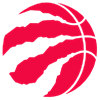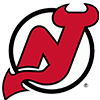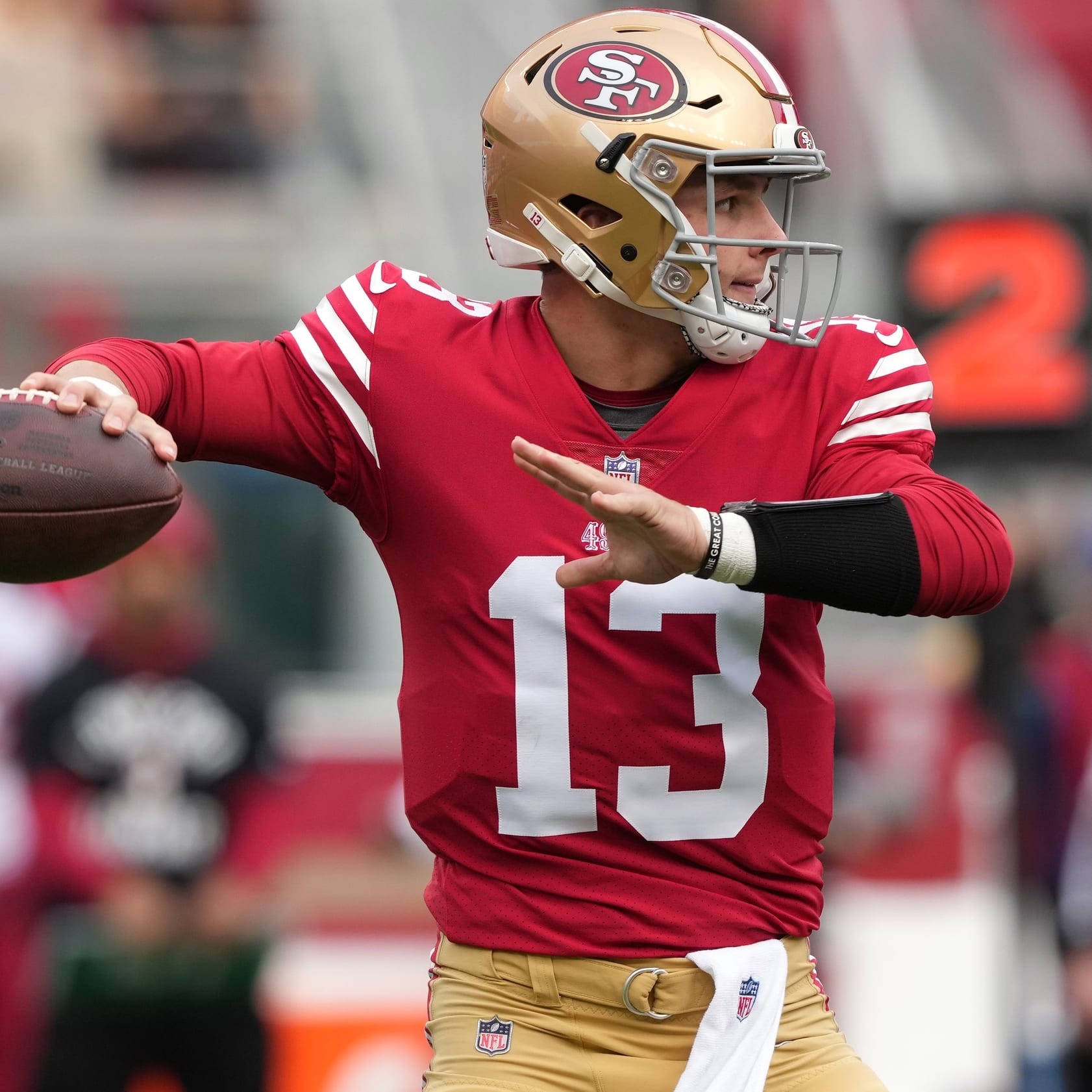In a typical redraft league the final few rounds are all about mining for upside/ceiling and grabbing a kicker and a defense. In best ball, a format where most of us are inclined to swing for the fences (generally speaking), we actually also care about floor/security in the endgame, as mediocre players that protect us from zeroes multiple times can end up having value without every being starter-worthy in "standard" leagues. Examples from last year include TE Tyler Conklin and WR Tim Patrick.
The ideal is to find both — guys who A) definitely will make the team and see some carries/targets, and B) have a realistic scenario to score 20-plus points a couple times per year. WR Kendrick Bourne and RB Jamaal Williams were good examples last season.
This is especially true in non-tournament play — like the 12-man leagues I wrote about last week — whereas in big tourneys it's much easier to justify someone like Romeo Doubs, whose current range of outcomes stretches from 'top/second target in an Aaron Rodgers offense' to 'healthy scratch on Sundays all season'.
Doubs, though, doesn't quite qualify for this article, with recent camp hype pushing him and a couple other rookie WRs up the ADP ranks in recent days (something RW's Mario Puig wrote about Thursday).
For our purposes, we'll look at players with ADPs outside the Top 180 on Underdog and Top 200 on DraftKings, i.e., guys who typically will be drafted in the final three rounds,
In a typical redraft league the final few rounds are all about mining for upside/ceiling and grabbing a kicker and a defense. In best ball, a format where most of us are inclined to swing for the fences (generally speaking), we actually also care about floor/security in the endgame, as mediocre players that protect us from zeroes multiple times can end up having value without every being starter-worthy in "standard" leagues. Examples from last year include TE Tyler Conklin and WR Tim Patrick.
The ideal is to find both — guys who A) definitely will make the team and see some carries/targets, and B) have a realistic scenario to score 20-plus points a couple times per year. WR Kendrick Bourne and RB Jamaal Williams were good examples last season.
This is especially true in non-tournament play — like the 12-man leagues I wrote about last week — whereas in big tourneys it's much easier to justify someone like Romeo Doubs, whose current range of outcomes stretches from 'top/second target in an Aaron Rodgers offense' to 'healthy scratch on Sundays all season'.
Doubs, though, doesn't quite qualify for this article, with recent camp hype pushing him and a couple other rookie WRs up the ADP ranks in recent days (something RW's Mario Puig wrote about Thursday).
For our purposes, we'll look at players with ADPs outside the Top 180 on Underdog and Top 200 on DraftKings, i.e., guys who typically will be drafted in the final three rounds, if at all.
Quarterbacks
DraftKings QBs
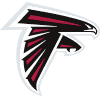 Marcus Mariota (DK: 208.3 — UD: 212.4)
Marcus Mariota (DK: 208.3 — UD: 212.4)
Quarterback is the easiest position to handle, with two endgame options that like to scramble and only face competition from rookies who aren't top prospects. It's not totally wild to draft third-round pick Desmond Ridder in Round 20 on DK — heck, I've done it once — but really it only makes sense (and barely) in a playoff-based format where we're fine with getting nothing from the rook for most of the season. In a 12-man league or Drafters/BB10s tourney where every week matters the same, Mariota in the 18th round is a much, much better pick than Ridder in the 20th.
Note: ESPN's Michael Rothstein reports that Mariota has widened the gap between himself and the rookie since the start of camp.
 Mitch Trubisky (DK: 217.6 — UD: 214.4)
Mitch Trubisky (DK: 217.6 — UD: 214.4)
Kenny Pickett is a first-round pick, and not a particularly early one, and not from a strong draft class. He'd likely have been a second- or third-rounder a lot of other years, and the typical QB from Round 2/3 is a significant downgrade from Trubisky (especially with a five-season experience gap). Maybe that sounds generous to Trubisky, a bottom-end starter or high-end backup, until you actually look through the draft history of QBs and realize the average outcome for non-first-rounders is essentially diddly-squat.
Pickett, of course, is technically a first-rounder, but it doesn't sound like he's making much progress early in camp, with Mark Kaboly of The Athletic writing Thursday "it surely appears that the Steelers want Trubisky to be their starting quarterback Week 1 in Cincinnati."
 Jimmy Garoppolo (DK: 226.9 — UD: 215.7)
Jimmy Garoppolo (DK: 226.9 — UD: 215.7)
Seattle is the obvious fit, except for the intra-division thing and the possibility of Garoppolo being mediocre enough to mess up the Seahawks' draft pick for a 2023 class that's supposed to be strong at QB. So maybe that's not a good fit, but Garoppolo will end up starting somewhere, at some point this season, even if San Francisco is out of the question.
He's probably better than the projected Week 1 starters in Seattle, Pittsburgh, Atlanta, Carolina, Washington, Detroit and Houston, plus one of the two New York teams (not sure which yet!). I prefer Mariota, or at least Trubisky, but Garoppolo is fine as a fallback QB3. Better him than incompetents like Drew Lock and Geno Smith or likely backups Pickett and Sam Darnold.
Underdog QB
 Zach Wilson (UD: 187.1 — DK: 175.5)
Zach Wilson (UD: 187.1 — DK: 175.5)
The guys mentioned above for DraftKings typically go unselected on Underdog, where the 18-round format encourages far more people to go with two QBs instead of three. The typical endgame QB picks on Underdog are Wilson, Ryan Tannehill, Jared Goff, Baker Mayfield, Carson Wentz and Davis Mills (in order of ADP). Sure, Wilson needs to be drafted first, but he's also the only one with even a hint of upside. The others are statues, besides Tannehill, whose passing efficiency fell off a cliff last year (good luck climbing back up that cliff after Tennessee's strange offseason).
Running Backs
Both Sites (RBs)
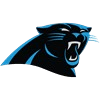 D'Onta Foreman (DK: 208.3 — UD: 205.9)
D'Onta Foreman (DK: 208.3 — UD: 205.9)
Chuba Hubbard had a busy but ultimately ugly rookie season last year, while Foreman unexpectedly revived his career with a strong stretch run in Tennessee after Derrick Henry hurt his foot. The Panthers don't have a ton invested in either player — Hubbard's a fourth-round pick and Foreman got $940,000 guaranteed on a one-year $2 million contract — so I'll bet on the guy who looked competent last year over the one who was constantly dealing with drops and missed assignments on top of averaging only 3.6 YPC.
Hubbard's real-life stinkiness would've gotten a lot more attention if anyone cared at all about anything involving the Panthers besides Christian McCaffrey and DJ Moore's fantasy production. Also consider that the backup role might include some goal-line work if No. 2 has 30 pounds on No. 1, who also happens to be coming off back-to-back injury-marred seasons.
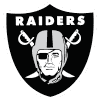 Zamir White (DK: 204.7 — UD: 207.4)
Zamir White (DK: 204.7 — UD: 207.4)
White seems like a pretty bad fourth-round pick from where I'm standing, but it also seems the Raiders aren't exactly in love with Josh Jacobs, the subject of much discussion after he got seven touches in the first quarter of the Hall of Fame game. I'm not really sure how this plays out, but it doesn't end with Kenyan Drake, Ameer Abdullah or Brandon Bolden getting a lot of carries, so it'll be Jacobs and/or White leading the way in a likely top-10 offense. Jacobs just needs to be decent to keep his job and put up easy fantasy points, but White is cheap enough to bet against that — if I'm making sense? Basically, I'm fine with both at current ADP, and would rather have neither as the lead back on my favorite team (the Ravens)
DraftKings RBs
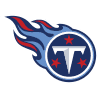 Dontrell Hilliard (DK: 228.1 — UD: 215.6)
Dontrell Hilliard (DK: 228.1 — UD: 215.6)
Hilliard topped 16 DK points in three of his eight games last season, despite never getting more than 12 carries in a game. He got it done instead with 19 receptions and a ridiculous 6.3 YPC while functioning as the smaller back in timeshares (mostly with D'Onta Foreman). While rookie fourth-rounder Hassan Haskins could take the Foreman role if Derrick Henry misses time this season, Hilliard is the one lined up for some Week 1 touches, as last year's competition for the passing-down role (Jeremy McNichols) is now on IR... with the Steelers. The Titans brought in special teamer Trenton Cannon and early down back Jordan Wilkins this offseason — in addition to 230-pound Haskins — leaving Hilliard essentially uncontested in obvious passing situations.
Dontrel Hilliard is getting his targets. Think he showed he can handle blocking duties last season. I can't see a non-injury scenario where he isn't the third-down back based on who else is here. #Titans
— Paul Kuharsky (@PaulKuharskyNFL) August 2, 2022
 Mike Davis (DK: 228.1 — UD: 215.6)
Mike Davis (DK: 228.1 — UD: 215.6)
J.K. Dobbins might not need both ACLs attached to be a better runner than the 29-year-old version of Davis, who nonetheless is in excellent position to get some snaps and touches, particularly early in the season. Dobbins is reportedly doing well and eager to resume practicing, but the Ravens haven't let him yet, and they've also acknowledged Gus Edwards is behind their other rehabbing players. The team needs someone else to step up and play competent snaps, and Davis at least offers good blocking, decent hands, size and toughness, albeit without much speed or agility. If not Davis, the Ravens are looking at Justice Hill (coming back from an Achilles tear), Corey Clement (mostly a special teams guy), Tyler Badie (undersized fifth-round rookie) and Nate McCrary (2021 UDFA) as their backfield options. Maybe they sign someone better or find someone after Week 1 cuts, but right now it's Davis in the lead to have a role.
Underdog RB
 Mark Ingram (UD: 199.3 — DK: 187.8)
Mark Ingram (UD: 199.3 — DK: 187.8)
This is less about expectation of an Alvin Kamara suspension and more about Ingram simply being the probable No. 2 back what should be a pretty good team (or at least a decent one). He's in the same ADP range as some No. 3s, which isn't criminal given his age and lack of explosiveness, but it's probably still true that he's one Kamara injury/suspension away from 15-plus touches per week (with potential for 5-10 carries even when Kamara is healthy. The Saints didn't draft any RBs this offseason and don't have anyone besides 29-year-old plodder Malcolm Brown with significant experience behind Kamara and Ingram.
Wide Receivers
Both Sites (WRs)
 Zay Jones (DK: 217.1 — UD: 205.9)
Zay Jones (DK: 217.1 — UD: 205.9)
Jones revived his career in the second half of last season and was then rewarded with a three-year, $24 million contract. Probably an overpay, but he's nonetheless locked in for a starting job, with he, Marvin Jones and Christian Kirk reportedly the starters in training camp while 2020 second-round pick Laviska Shenault has been stuck with the second unit. Shenault is still drafted over Jones sometimes, even with reports like this one from SI.com's John Shipley suggesting Laquon Treadwell has been the only WR besides Jones/Jones/Kirk to get first-team snaps in any significant capacity this summer.
 Curtis Samuel (DK: 209.8 — UD: 196.9)
Curtis Samuel (DK: 209.8 — UD: 196.9)
Samuel had the groin/hamstring injuries last year, and now this year is dealing with so-called conditioning issues. One can't help but wonder if the two are related, but it's less of a concern now that Samuel is practicing with his teammates (including 11-on-11s). The late start to camp has further depressed his already-low ADP, making him an endgame target in best ball just two years after his career-best 2020 season.
Samuel turns 26 next week, and shouldn't have been written off to this extent (ADP in the 200s) even with the injury issues and target/snap competition from Jahan Dotson. Samuel still has a top-three role, and is still more talented than nearly any other player you'll find in the 200s.
Tourney Special: FA Will Fuller (DK: 207.0 — UD: 187.1)
DraftKings WRs
 Bryan Edwards (DK: 227.5 — UD: 214.3)
Bryan Edwards (DK: 227.5 — UD: 214.3)
We've probably touted Edwards enough for one lifetime here at RotoWire. Basically, the Falcons still have nobody else behind Drake London, and Edwards' recent shoulder injury doesn't appear serious. The former Raider won't have a starting job handed to him, but he's definitely in the mix and has flashed some talent when given the chance (571 yards last year, career 10.3 YPT).
#Falcons WR Bryan Edwards back wearing a yellow jersey. Fell on his shoulder Saturday and missed Monday's practice. pic.twitter.com/Ez6NJ2KbTp
— D. Orlando Ledbetter (@DOrlandoAJC) August 2, 2022
 Amari Rodgers (DK: 227.3 — UD: 215.3)
Amari Rodgers (DK: 227.3 — UD: 215.3)
Rodgers is really just a tourney/stack play, coming off a rookie season in which he mostly served as a return specialist and was targeted only eight times. The positives? He's still young (23 in September), a recent third-round pick (85th overall in 2021) and says he lost at least 10 pounds this offseason.
Normally we'd just ignore best-shape-of-his-life narratives, but the weight loss is interesting given Rodgers' unusual build for a wide receiver (5-9, 212 is far more typical for a RB). He ran a 4.52 at last year's Combine — pretty good given his height/weight — and may now be faster and more agile, i.e., better suited to traditional WR tasks. Rodgers mostly figures to play the slot, making it okay to draft both him and either Allen Lazard or Romeo Doubs in Aaron Rodgers stacks. Randall Cobb is the main competition for Amari, in all likelihood.
At the beginning of training this Off Season I weighed 218.. Today I'm at 202 and feeling better than ever. Trust the process and results will come💯
— Amari Rodgers3️⃣ (@arodgers_3) July 25, 2022
Underdog WRs
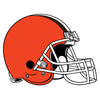 Donovan Peoples-Jones (UD: 185.1 — DK: 190.4)
Donovan Peoples-Jones (UD: 185.1 — DK: 190.4)
The price has gone up, but not too much, with the Browns struggling to get/keep their wide receivers on the practice field apart from DPJ and Amari Cooper. I already had Peoples-Jones as a strong favorite for the No. 2 job, after the 2020 sixth-round pick had 303 yards as a rookie and 597 as a sophomore. He also had aDOTs over 15.0 both years, and it isn't the worst thing to be pigeonholed as a deep threat when we're talking about late-round best ball picks. In fact, a deep threat who is basically guaranteed a starting job is exactly the kind of guy we're looking for in the late rounds. More so if Deshaun Watson is the QB than Jacoby Brissett, but even with jittery Jacoby under center there's a chance for Peoples-Jones to see a handful of targets per week.
 Kendrick Bourne (UD: 191.4 — DK: 197.2)
Kendrick Bourne (UD: 191.4 — DK: 197.2)
Bourne had a 55-800-3 receiving line last season, gets some extra touches on trick plays and is still usually available in the final 3-4 rounds of drafts. I even mentioned him above as the example of a highly successful late-round best-ball pick last year, regularly scoring at least five PPR points and occasionally breaking out for 20-plus. Will he reach 800 receiving yards again? Unlikely, but 600 plus some points from trick plays and reverses gets the job done at this ADP.
Tight Ends
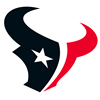 Brevin Jordan (DK: 197.5 — UD: 201.0)
Brevin Jordan (DK: 197.5 — UD: 201.0)
Jordan narrowly misses our qualifier (non-Top 200) for DraftKings, but he's a good pick there in Round 16 or 17, with a nice opportunity to step up as the second or third target for Davis Mills. The tight end did well with his limited opportunities as a rookie, scoring three TDs in nine games, and it's still pretty weird that someone with his profile lasted until the fifth round of a 2021 draft where Tre' McKitty, Tommy Tremble and Hunter Long were third-round picks. Not that I mind any of those guys, but Jordan is faster and younger than all three and also was a far more productive college receiver. It'll likely be him or Nico Collins stepping up as Brandin Cooks' inexperienced sidekick.
 Mo Alie-Cox (DK: 203.3 — UD: 209.3)
Mo Alie-Cox (DK: 203.3 — UD: 209.3)
Alie-Cox is one of those players who kind of became a meme, and people stopped discussing him in a serious way, ignoring obvious weaknesses (agility, route-running) and pointing to his huge body and small-sample receiving efficiency. He's a good real-life player, and yes I'll admit he's "fun", but he's unlikely to ever be desirable as a pass-catching TE in 11 personnel (note that it's harder to put up 10 YPT when you run your routes against nickel/dime defenses focused on the pass rather than base defenses that are primarily worried about Jonathan Taylor).
The Colts, though, might end up with MAC in that role anyway, with the most recent camp report from Zak Keefer of The Athletic essentially suggesting rookie third-round pick Jelani Woods and 2021 fourth-rounder Kylen Granson both look lost. Maybe Alie-Cox still comes off the field for third-and-longs and what not, but the weak competition essentially locks him in for a starting job and suggests he'll get more of the in-between situations than he probably should.
















